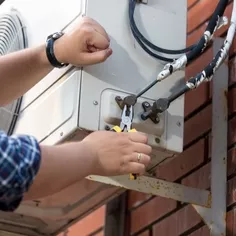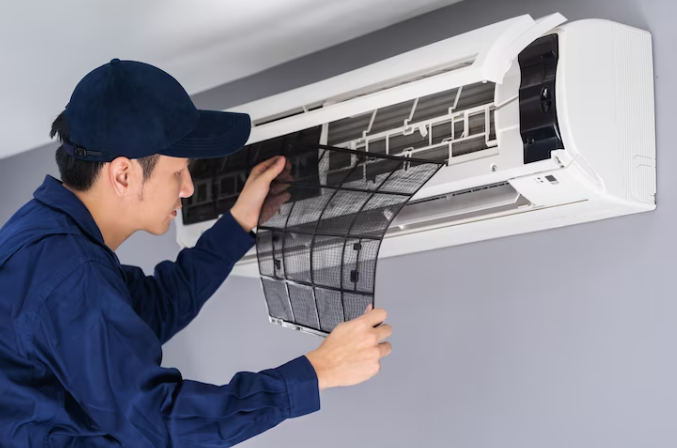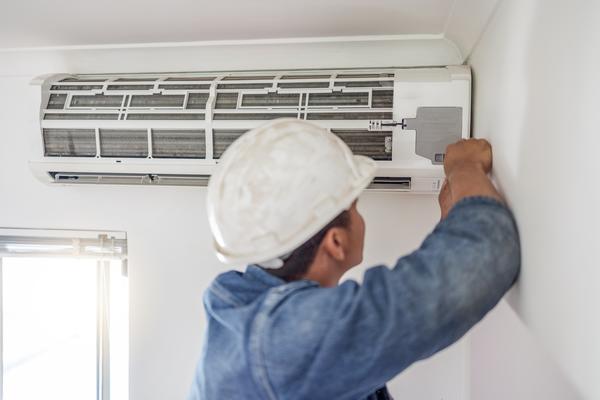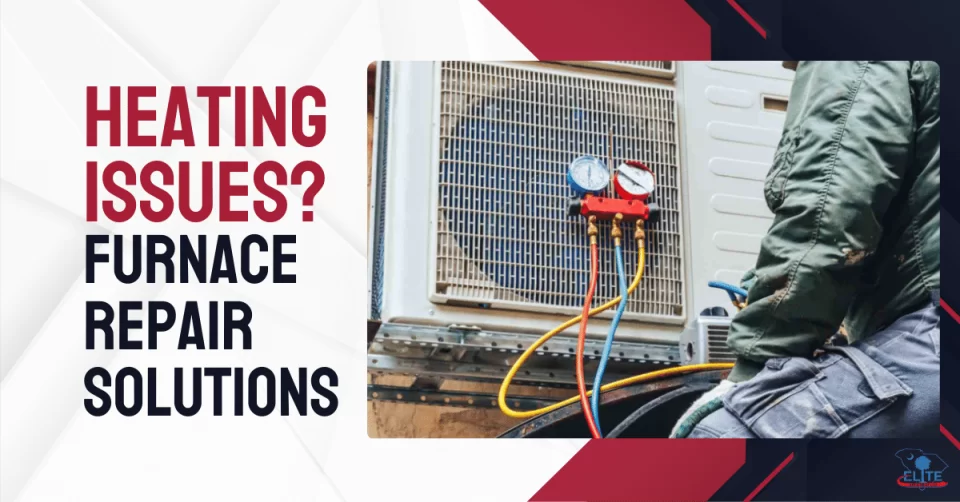In today’s world of smart homes and cutting-edge technologies, homeowners are increasingly looking for ways to make their living spaces more energy-efficient, comfortable, and tailored to their needs. One such revolutionary technology that has taken the HVAC industry by storm is HVAC zoning.
While many people are familiar with traditional heating and cooling systems, HVAC zoning offers a dynamic approach to managing temperature control and energy use in homes. It’s not just a luxury but a game-changer that can transform the way we experience comfort within our homes.
How Does HVAC Zoning Improve Energy Efficiency in Homes?
One of the most significant advantages of HVAC zoning is its ability to improve energy efficiency. Traditional HVAC systems typically operate with a one-size-fits-all approach, where the temperature is controlled uniformly across the entire home, regardless of the specific needs of different rooms or areas. This can lead to unnecessary energy consumption and higher utility bills, as the system heats or cools spaces that aren’t in use.
With HVAC zoning, the system is divided into distinct zones, each with its own thermostat and independent control. This allows for customized temperature settings, depending on the area’s function or how much it’s being used. Here’s how HVAC zoning improves energy efficiency:
- Targeted Heating and Cooling: In a zoned system, rooms that aren’t in use—such as guest bedrooms or unused offices—can remain at a more energy-efficient temperature, while rooms with high traffic, like the living room or kitchen, can be heated or cooled more intensively. This reduces wasted energy.
- Reduced HVAC Load: Instead of running the HVAC system at full blast for the entire house, HVAC zoning enables the system to only work as hard as necessary for specific areas. This means that you’re not overworking your HVAC, which leads to lower energy consumption.
- Decreased Utility Bills: By reducing the amount of energy used to heat or cool the entire home, HVAC zoning can lead to significant savings on your monthly utility bills. Over time, the cost of installing a zoning system can be offset by the savings it generates.
- More Efficient Climate Control: HVAC zoning ensures that you’re not overcompensating for temperature imbalances throughout your home. For example, the second floor often becomes hotter than the first due to heat rising, but with a zoned system, you can regulate the temperature of both floors independently for maximum comfort and efficiency.
In essence, HVAC zoning gives you the power to control your energy usage with precision, making your home more sustainable and cost-efficient without sacrificing comfort.
What are the Main Benefits of Using HVAC Zoning in Modern Living Spaces?
As homes evolve into more complex living spaces with open floor plans, multi-functional rooms, and varied living areas, the need for personalized comfort becomes more apparent. HVAC zoning offers a host of benefits that align perfectly with modern lifestyles. Here are some of the most notable advantages:
1. Personalized Comfort for Everyone in the Home
Gone are the days when a single thermostat controlled the temperature for the entire house, leaving some rooms too hot and others too cold. HVAC zoning allows each family member to tailor the temperature to their preferences, ensuring that everyone is comfortable. Whether it’s a cool bedroom for restful sleep or a warm, cozy living room to relax in, each zone can be adjusted for the ultimate comfort.
2. Control Over Different Areas of the Home
One of the standout benefits of HVAC zoning is that it provides total control over different areas of the house. In open-concept homes, where the temperature can vary significantly from one area to another, HVAC zoning makes it easy to regulate temperatures for each distinct space. For example, the kitchen, which generates heat from cooking, can be kept cooler, while the living room, where the family gathers, can be kept warmer.
3. Improved Indoor Air Quality
Because HVAC zoning allows for more precise control over temperature and humidity levels, it also plays a role in improving indoor air quality. With the ability to shut off heating or cooling to certain areas, the system avoids unnecessary moisture buildup, which can lead to mold growth or other air quality issues. This is especially important in spaces like bathrooms or basements that tend to experience higher humidity.
4. Increased Home Value
Upgrading to a zoned HVAC system can increase the value of your home, making it a wise investment. Modern homebuyers are always on the lookout for homes with smart features, and HVAC zoning is certainly an appealing perk. Not only does it make the home more comfortable and energy-efficient, but it also demonstrates that the property is equipped with modern technology.
5. Better Temperature Regulation Across Multiple Floors
Homes with multiple floors often experience temperature discrepancies between the upstairs and downstairs areas, particularly during winter when heat rises. HVAC zoning solves this problem by allowing the homeowner to control each floor’s temperature separately. This results in better distribution of heat and cooling, so every floor is maintained at a comfortable temperature year-round.
How Does HVAC Zoning Work to Maintain Personalized Comfort?
The magic of HVAC zoning lies in its ability to provide customized comfort based on individual preferences and needs. Here’s a closer look at how this system operates to keep the home feeling just right for everyone:
1. Dividing the Home Into Zones
The first step in implementing HVAC zoning is to divide the home into different zones, or areas that can be controlled independently. A zone might be a specific room, floor, or even an entire section of the house. This is done by installing additional dampers in the ductwork to regulate airflow to specific areas.
2. Smart Thermostats for Each Zone
Each zone is equipped with its own thermostat, allowing individuals to adjust the temperature to their liking. These thermostats communicate with the central HVAC system, sending signals to the dampers to open or close depending on the desired temperature in each zone.
3. Dampers Control Airflow
Dampers are devices installed in the ductwork that control the flow of air to each zone. When a specific zone requires heating or cooling, the damper opens to allow air to flow into the area. Conversely, if the zone is at the desired temperature, the damper closes, stopping the airflow to that zone. This ensures that the HVAC system only works to condition areas that need attention, increasing efficiency.
4. Automated Adjustments
Many HVAC zoning systems come with smart capabilities, enabling homeowners to automate temperature settings. With Wi-Fi-enabled thermostats, users can program their zones to adjust based on the time of day, activity, or occupancy. For instance, the temperature in a child’s bedroom can be set to adjust automatically as bedtime approaches, ensuring they’re comfortable when they go to sleep.
Why is HVAC Zoning Considered a Game-Changer For Modern Home Design?
The days of bulky, inefficient HVAC systems that can’t meet the demands of modern living spaces are over. HVAC zoning has redefined what homeowners can expect in terms of comfort, control, and energy savings. Here’s why HVAC zoning is considered a game-changer for modern home design:
1. Supports Open-Concept and Multi-Functional Spaces
Modern homes are increasingly embracing open-concept designs, where walls between rooms are minimal, creating vast, interconnected spaces. While this can foster a sense of openness and flow, it can also create uneven heating and cooling. HVAC zoning is the perfect solution for these types of spaces because it can target specific areas with precision, ensuring that each zone maintains an optimal temperature.
Additionally, many homeowners today prefer multi-functional spaces—such as a combined living room, kitchen, and dining room. Zoning systems can adapt to the different needs of these spaces by regulating the temperature of each area according to the activities taking place.
2. Incorporates Energy-Efficient Technology into Homes
As more people strive to live sustainably, energy efficiency has become a key factor in home design. HVAC zoning is a critical component of a green home, as it allows homeowners to use energy only where it’s needed, reducing waste and lowering carbon footprints.
3. Enhances Comfort Without Sacrificing Style
In the past, homeowners had to choose between comfort and aesthetics when it came to their heating and cooling systems. HVAC zoning allows homeowners to enjoy personalized comfort without the need for bulky space heaters or visible air conditioners. The system is seamlessly integrated into the home’s design, ensuring that comfort doesn’t come at the expense of style.
HVAC zoning is revolutionizing the way we experience comfort, efficiency, and control in our homes. With its ability to improve energy efficiency, offer personalized comfort, and adapt to modern home design trends, it’s clear why zoning systems are becoming a must-have feature for homeowners. Whether you live in a sprawling multi-story home or a compact urban apartment, HVAC zoning can provide you with the tailored experience you deserve—transforming your house into a true haven of comfort.
Ready to Revolutionize Your Home’s Comfort? Elite Air & Heat LLC is Here to Help!
If you’re looking to take control of your home’s comfort and efficiency, Elite Air & Heat LLC has the expertise and solutions you need. Our team is ready to help you upgrade to an HVAC zoning system that not only saves you money but also ensures every corner of your home is perfectly tailored to your needs.
Don’t wait for temperature imbalances or high energy bills to make you uncomfortable—contact us today and experience the difference zoning can make!




